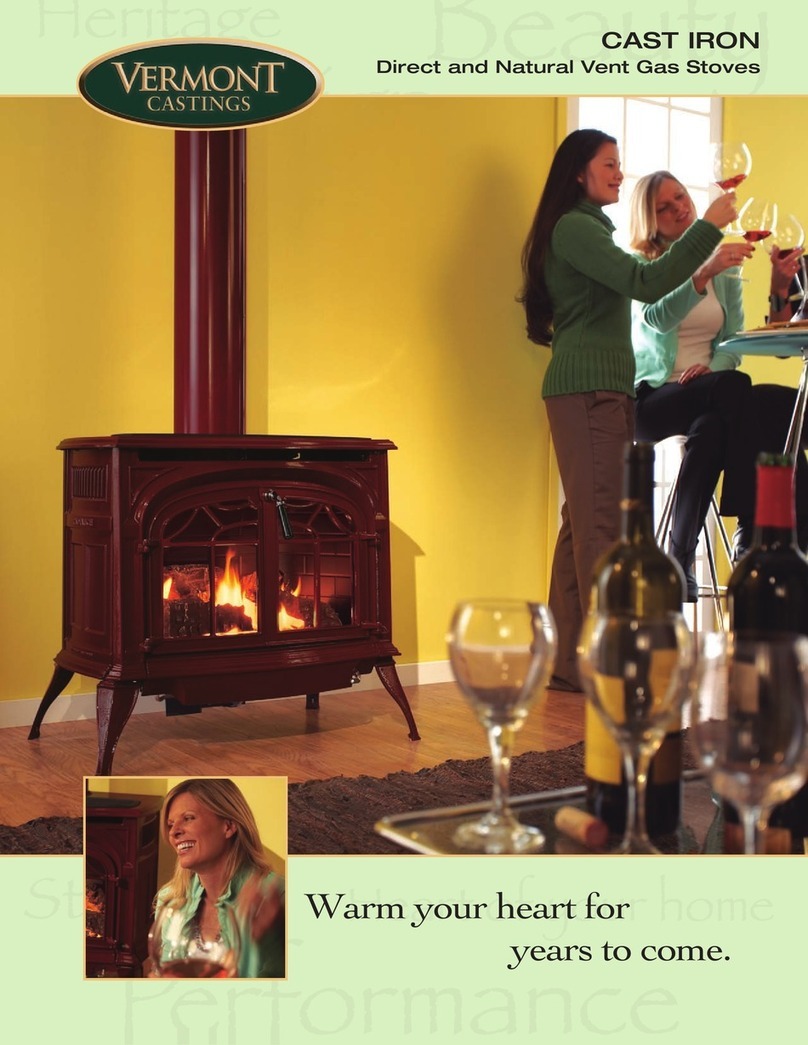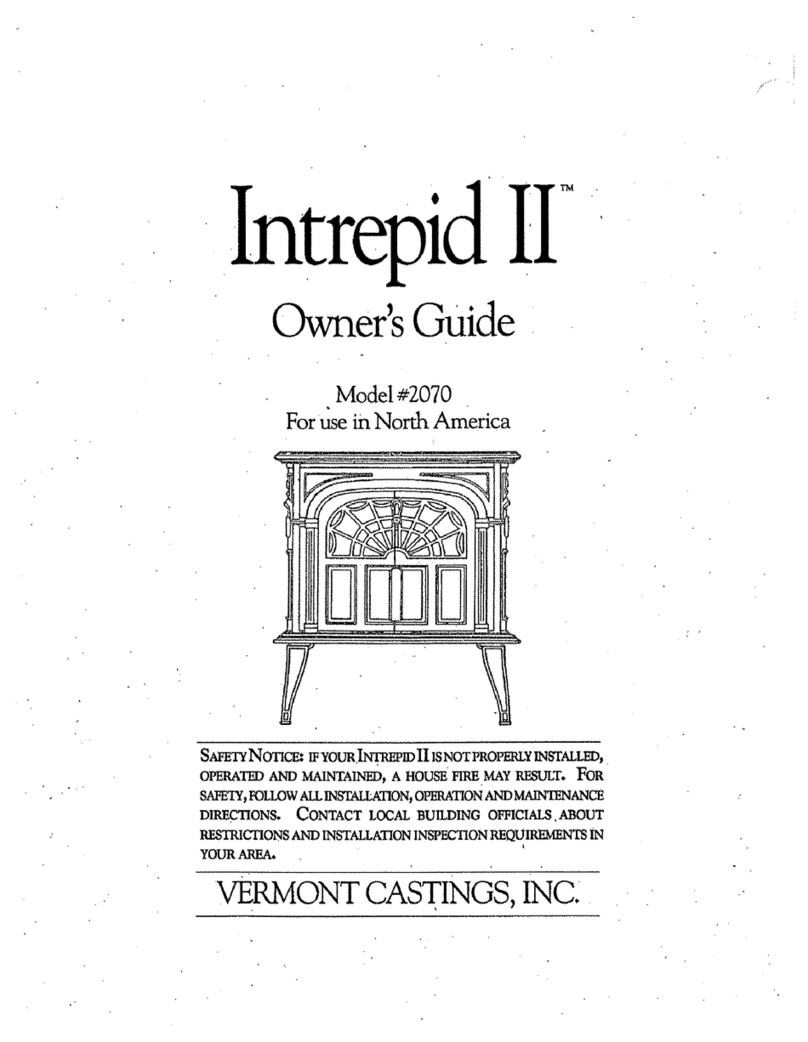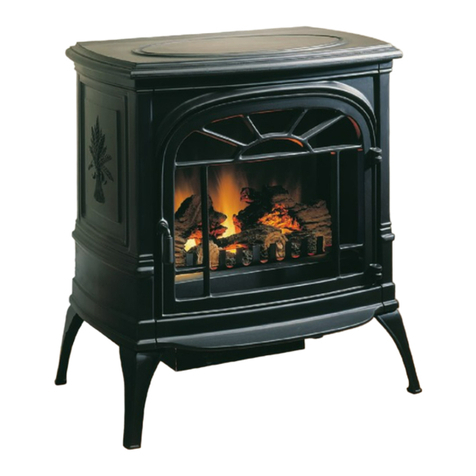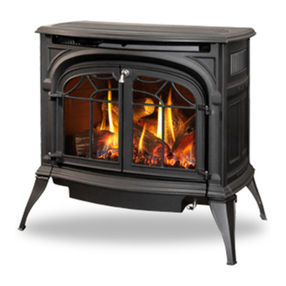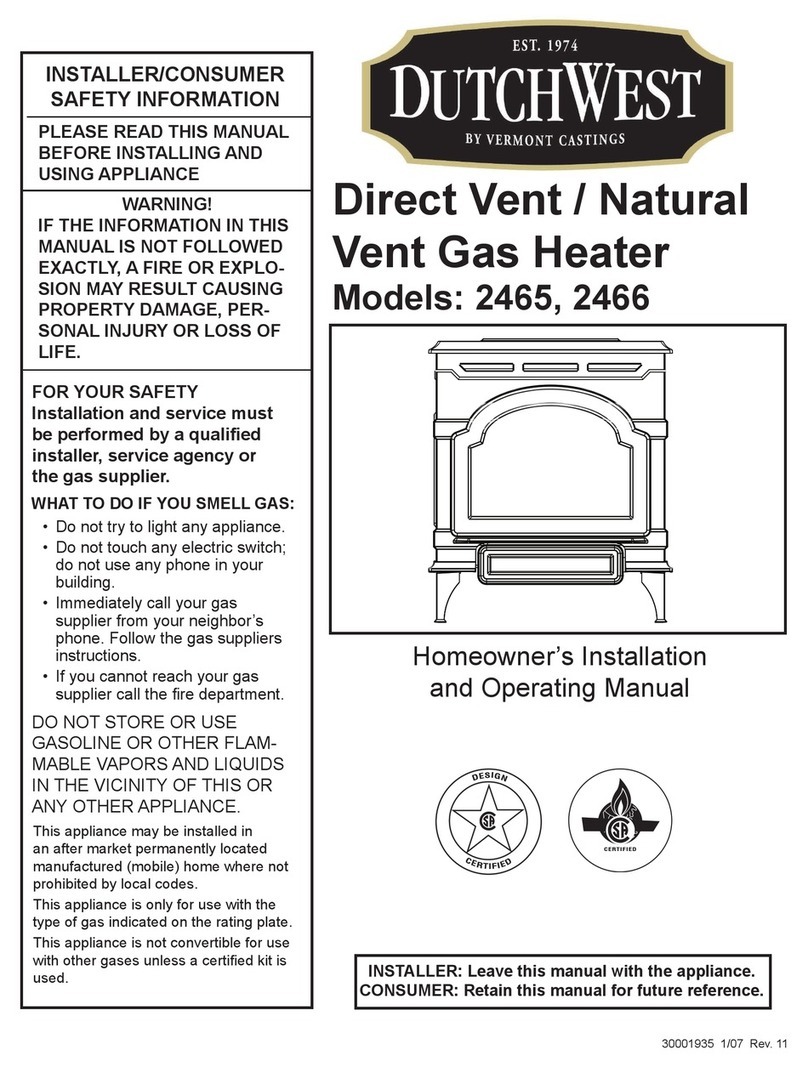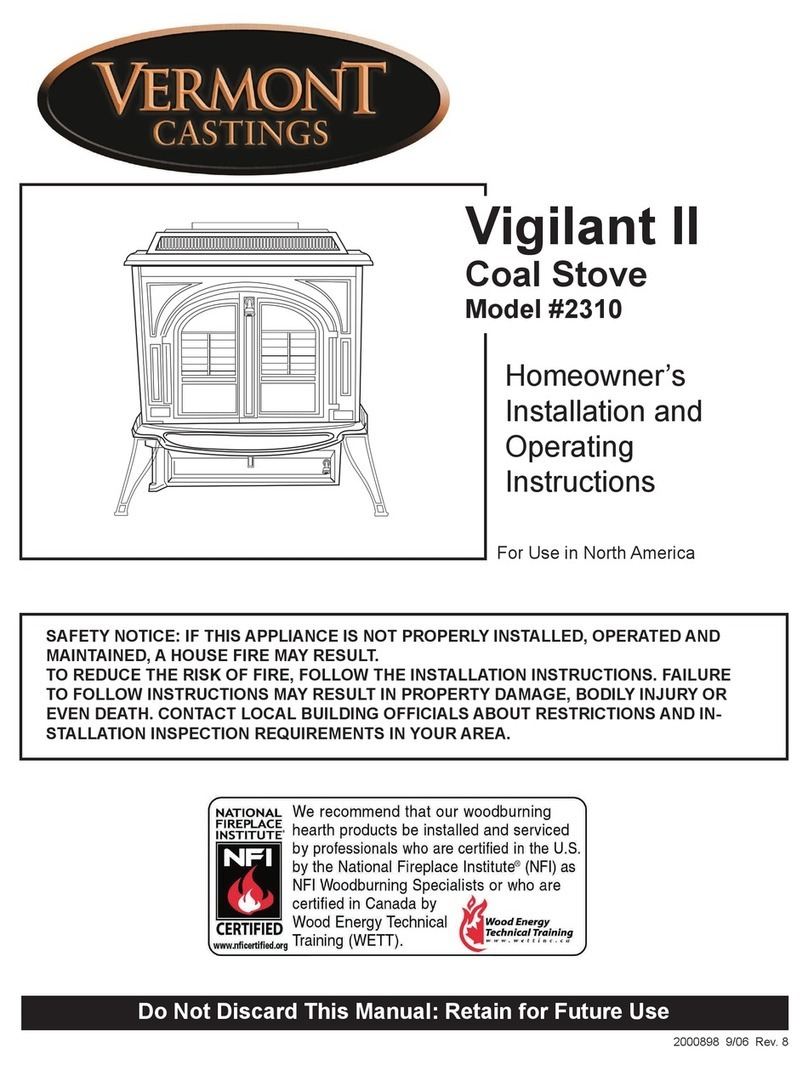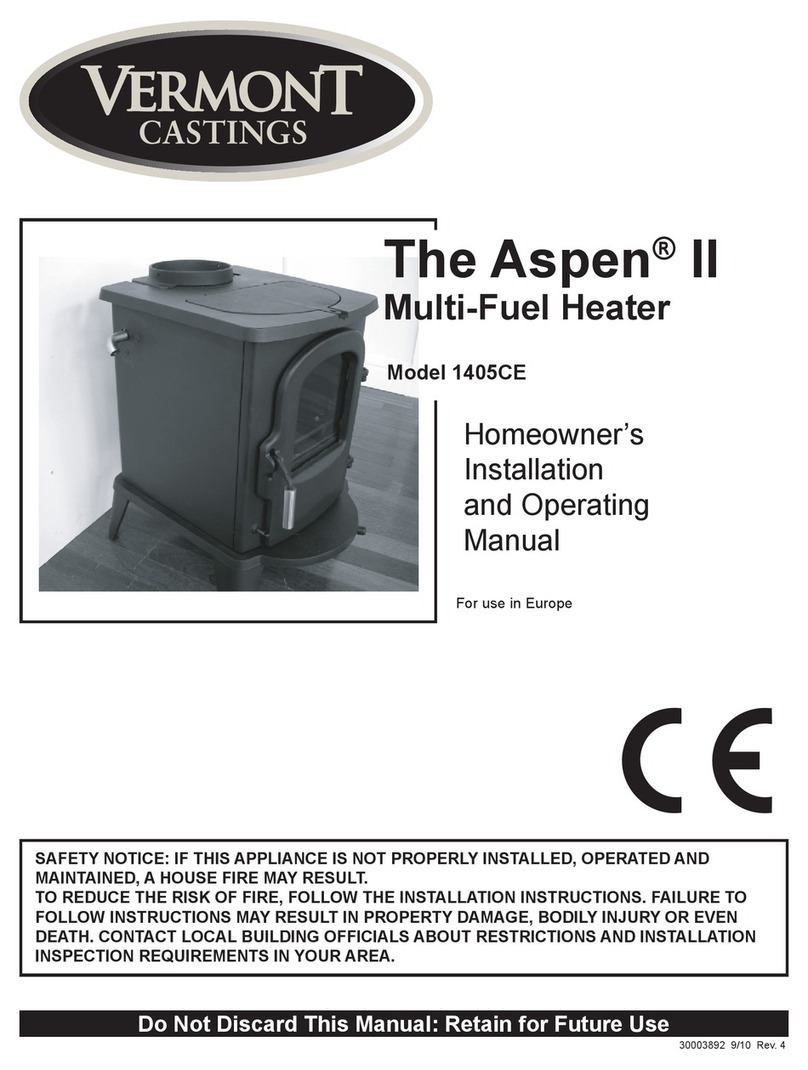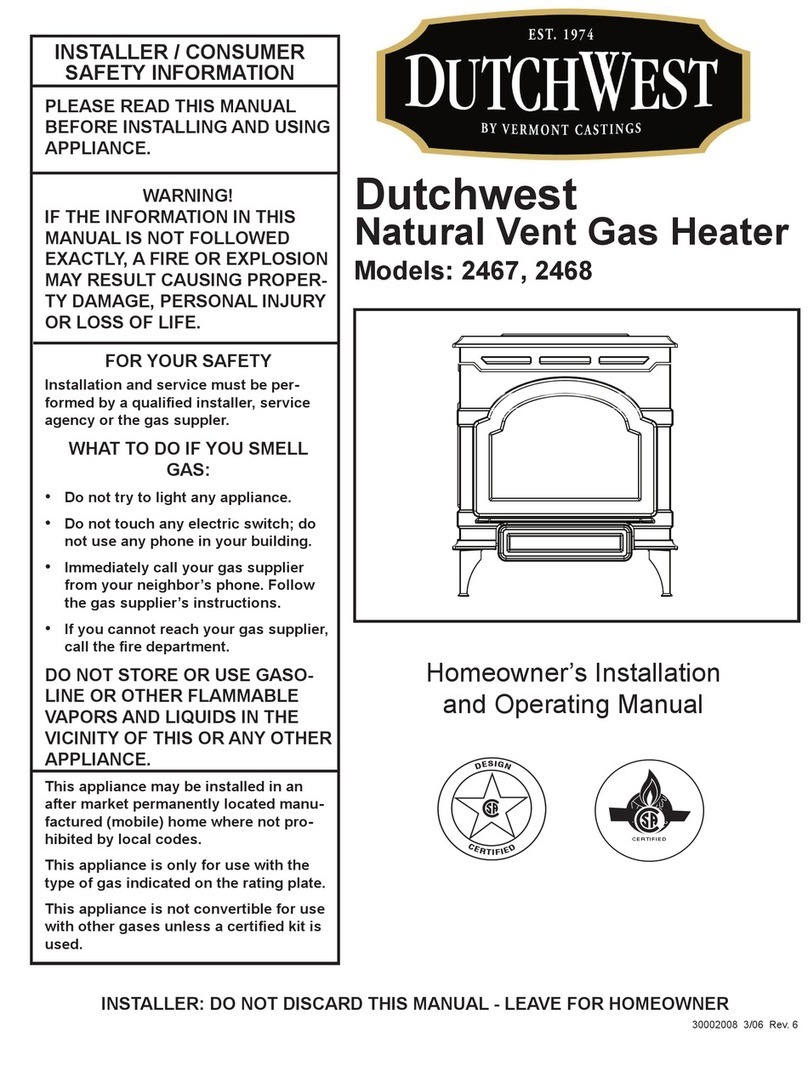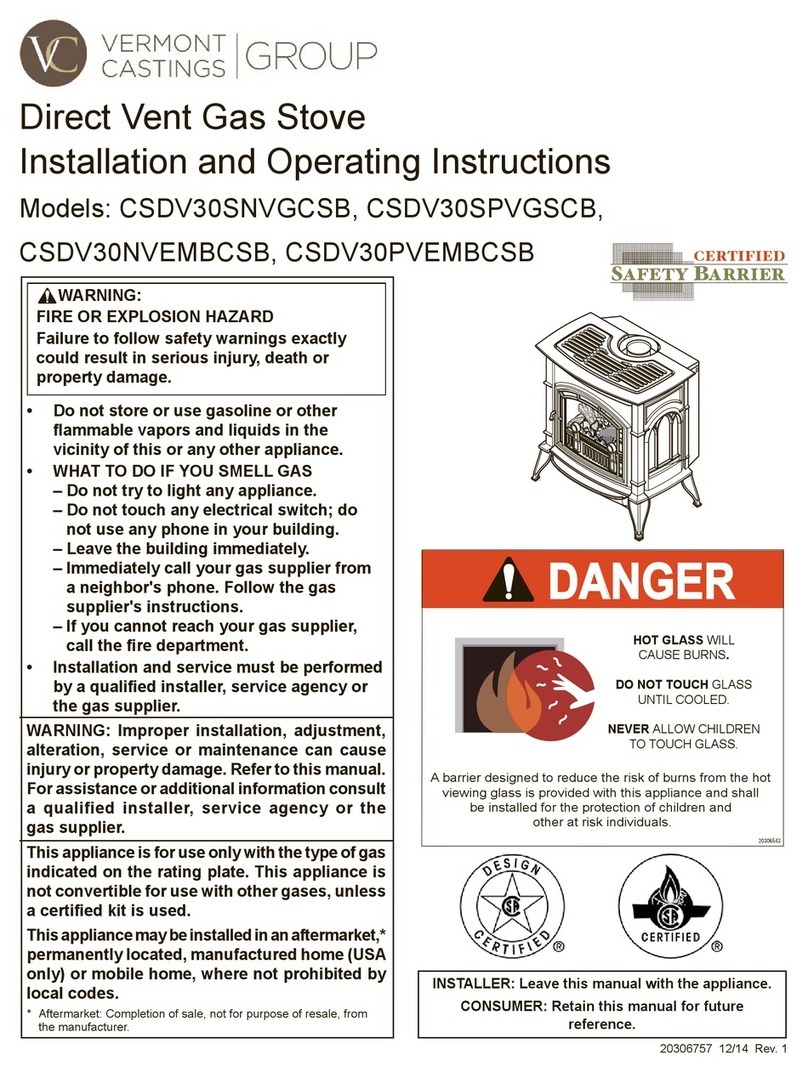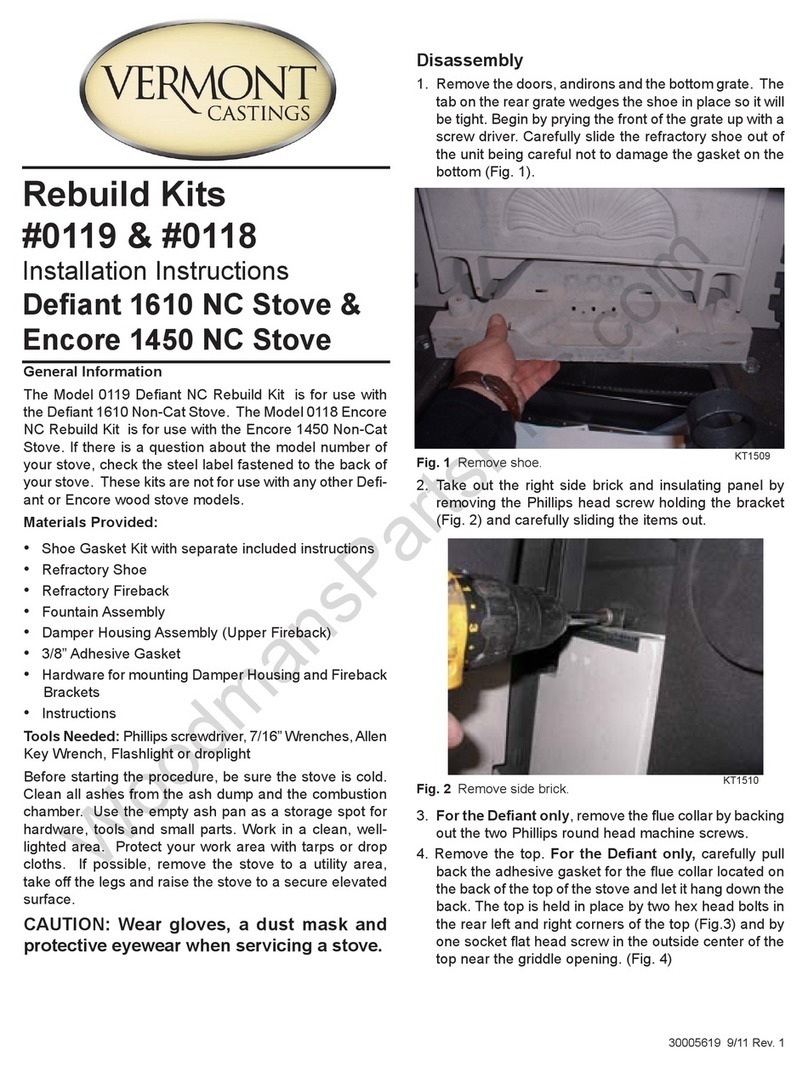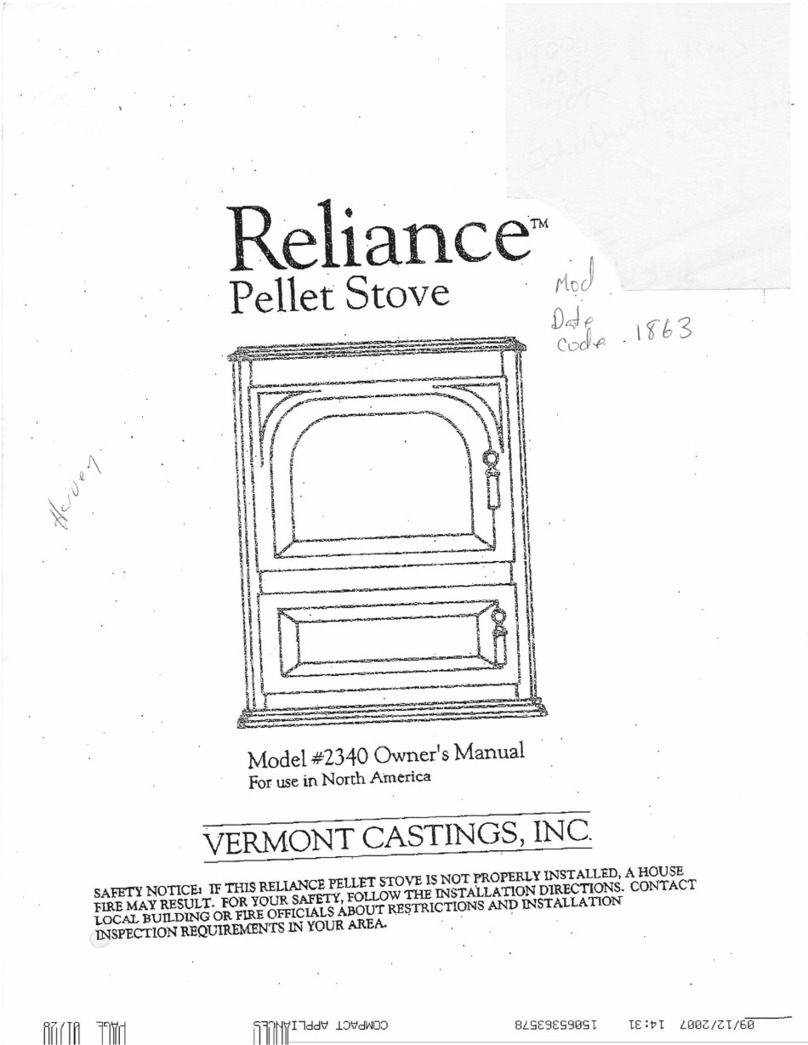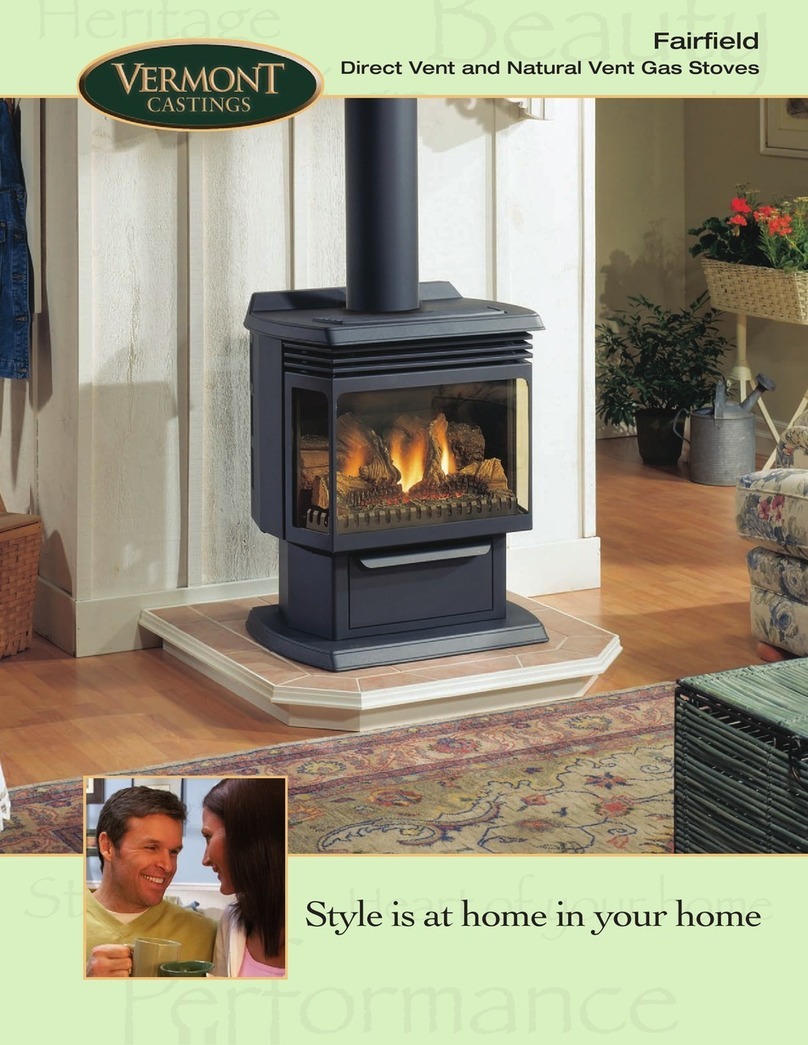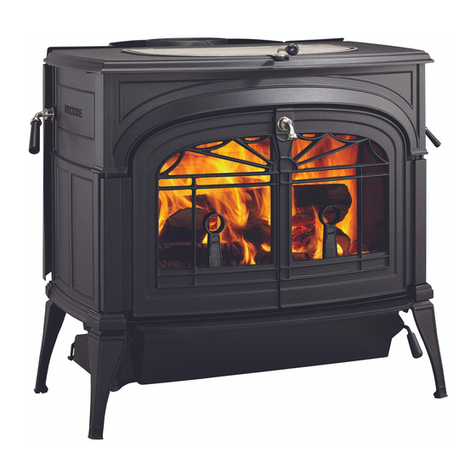
5
Intrepid®II Wood Burning Stove
30003840
Masonry Chimneys
Aninspectionofthechimneymustconrmthatithasalin-
ing. Do not use an unlined chimney. The chimney should
have no cracks, loose mortar, other signs of deterioration,
or blockage. Repair any defects before using the chimney
with your stove.
Seal any unused openings in an existing masonry chimney
with masonry to the thickness of the chimney wall, and re-
pair the chimney liner. Openings sealed with pie plates or
wallpaper are a hazard; seal them with mortar or refractory
cement.Intheeventofachimneyre,amesandsmoke
may be forced out of these unused thimbles.
The chimney should be thoroughly cleaned before use.
A newly-built masonry chimney must conform to the
standards of your local building code or, in the absence
of a local code, to a recognized national code. Masonry
chimneys must be lined, either with code-approved ma-
sonry or pre-cast refractory tiles, stainless steel pipe, or
a code-approved, “poured-in-place” liner. The chimney’s
clean-out door must seal tightly.
Prefabricated Chimneys
These should be an internal diameter of 150 mm (6") and
be of the twin wall insulated construction that has been
approved for solid fuel use (e.g. Rite Vent ICS of ICID
Lite Chimney Systems). Diameters over 200 mm (8") are
not recommended due to the large cross-section causing
excessivecoolingoftheuegases.
DO NOT CONNECT THIS UNIT TO A CHIMNEY FLUE
SERVING ANOTHER APPLIANCE.
Chimney Size
An Intrepid II is approved for venting into a masonry chimney
withamaximumuesizeof200x200mm(8"x8"),and
intoarounduesizeof150mm(6").
It may not be vented into larger chimneys without a liner
toreducetheeffectiveuesizeto150mm(6")diameter.
Largerchimneysmusthavetheiruesrelinedforproper
stove performance.
Accessories to make the connection between stainless
steel chimney liners and your Intrepid II are available
through your local dealer.
Chimney Connector Guidelines
Chimney connector is the double-wall or single-wall pipe
that connects the stove to the chimney. The chimney is a
masonryorprefabricatedstructurethatenclosestheue.
Chimney connectors are used only to make the connection
from the stove to the chimney.
Connecting Flue Pipes
Connector pipes should meet the requirements of the build-
ing regulations. This can be achieved by the use connecting
uepipesincludedinthefollowingcategories:
a) Vitreous enamelled steel pipe complying with BS 6999:
1989 (1996);
b) Pipes made from stainless steel as descirbed in BS EN
1008-1:1995 grades 1.4401, 1.4404, 1.4432 or 1.4436 with
uewallthicknessofatleast1mm;
c)Mild steel uepipes complying with BS 1449: Part 1:
1991,withauewallthicknessofatleast3mm;
d) Cast iron fluepipes complying with BS 41: 1973
(1998).
FluePipeswithaspigotandsocketjointshouldbetted
with the socket facing upwards, to contain condensates
andmoisturewithintheue.Jointsshouldbemadegas
tight using proprietary jointing accessories, or, where ap-
propriate, by packing joint with noncombustible rope and
recement.
Double-wall chimney connectors must be tested and list-
ed for use with solid-fuel burning appliances. Single-wall
chimney connectors should be made of 24 gauge or
heavier steel, and should be 150 mm (6") in diameter. Do
not use galvanized connector; it cannot withstand the high
temperatures that can be reached by smoke and gases,
and may release toxic fumes under high heat.
If possible, do not pass the chimney connector through a
combustible wall or ceiling. If passage through a combus-
tible wall is unavoidable, refer to the section following on
Wall Pass-Throughs. Do not pass the chimney connector
through an attic, a closet, or any similar concealed space.
The whole connector should be exposed and accessible
for inspection and cleaning.
In horizontal runs of single-wall chimney connector without
protective shields, maintain a clearance of at least 660 mm
(26") from the ceiling.
Keep the horizontal run of chimney connector as short
and direct as possible, with no more than two 90° turns.
Slope horizontal runs of connector upward 20 mm per m
(1/4" per foot) going from the stove toward the chimney.
The recommended maximum length of a horizontal run is
914 mm (36"). The recommended total length of chimney
connector is 2.4 m (8’).
In cathedral ceiling installations, extend the prefabricated
chimney down to within 2.4 m (8’) of the stove.
SAFETY NOTE: ALWAYS WEAR GLOVES AND PRO-
TECTIVE EYEWEAR WHEN DRILLING, CUTTING OR
JOINING SECTIONS OF CHIMNEY CONNECTOR.
